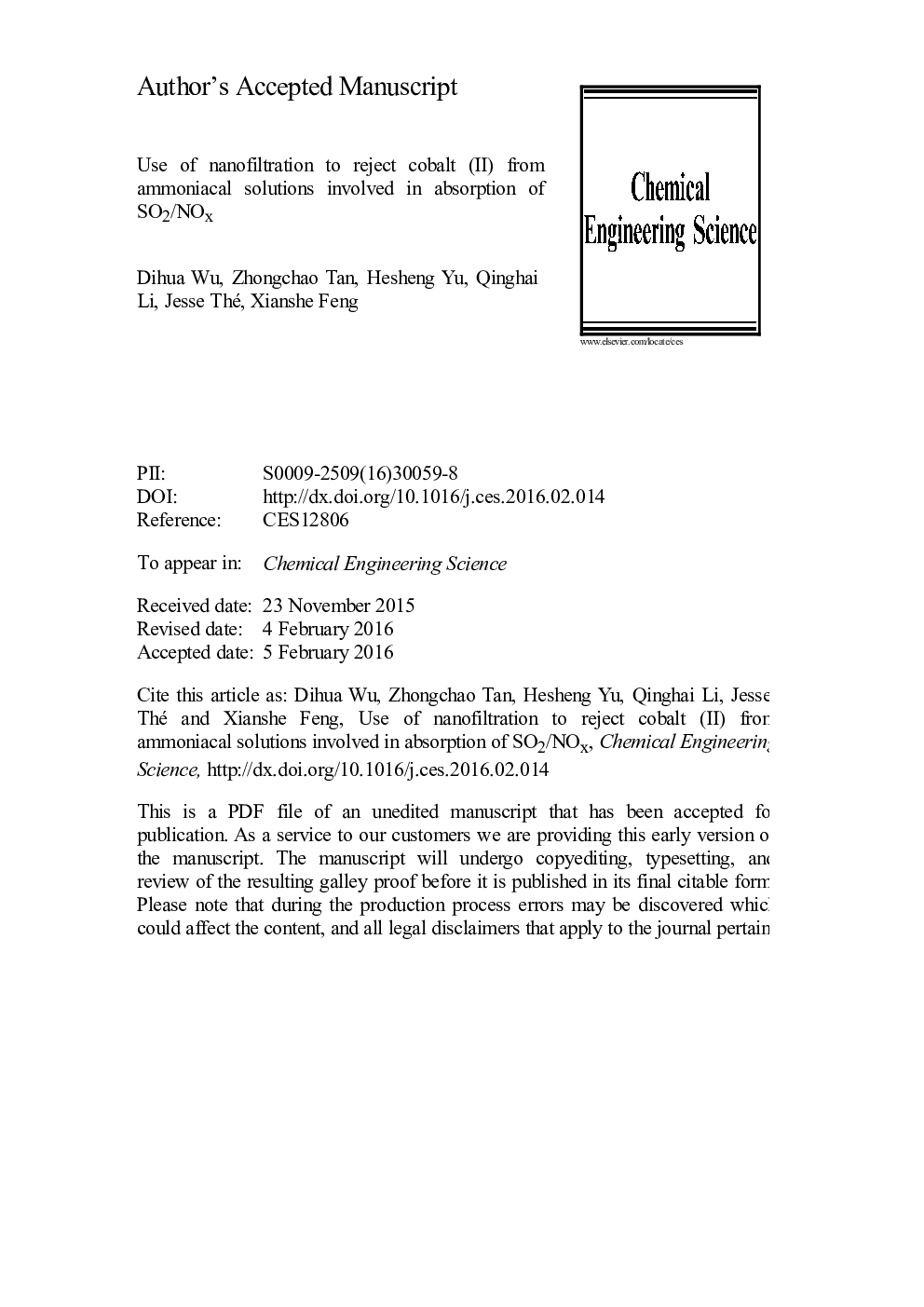| Article ID | Journal | Published Year | Pages | File Type |
|---|---|---|---|---|
| 6589231 | Chemical Engineering Science | 2016 | 44 Pages |
Abstract
The retention behavior of cobalt(II) by nanofiltration from ammoniacal solutions used for the simultaneous absorption of SO2/NOx was investigated. The cobalt(II) rejections in aqueous ammoniacal solutions were higher than 99% by the membrane with alkaline stability and a molecular weight cut-off of ~200 Da. The presence of small and mobile NH4+ in the feed solution improved the cobalt(II) retention. It was found that NH4NO3 had little effect on the permeation flux or cobalt(II) rejection while (NH4)2SO4 lowered both. The effects of initial cobalt(II) concentration (0.006-0.03 mol/L) in the feed on cobalt(II) rejection depended on the compositions of the solution. An increase in transmembrane pressure (0.4-0.8 MPa) led to higher cobalt(II) rejections for all solutions. Cobalt precipitates were generated during the filtration process due to the loss of chelating agent NH3·H2O. The decline in permeation flux and cobalt(II) rejection could be recovered by effective cleaning. Adding NH3·H2O during the filtration process could prevent the formation of cobalt precipitates so as to avoid deterioration in the membrane performance.
Related Topics
Physical Sciences and Engineering
Chemical Engineering
Chemical Engineering (General)
Authors
Dihua Wu, Zhongchao Tan, Hesheng Yu, Qinghai Li, Jesse Thé, Xianshe Feng,
